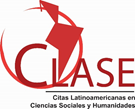Caracterización de la Educación Superior ecuatoriana en el contexto de la producción científica nacional y latinoamericana
Resumen
El estudio refleja las particularidades de la ES ecuatoriana a partir de los indicadores: flujo de estudiantes graduados por nivel de formación y flujo de estudiantes graduados por campo de conocimiento (período 2015 – 2020); publicaciones científicas 2009 – 2018; calidad de las publicaciones científicas 1996-2020 y ranking de las IES ecuatorianas 2014-2018. Los resultados evidencian que, en Ecuador los titulados de tercer nivel y tercer nivel técnico registran un decrecimiento (32% y 20% respectivamente); tercer nivel tecnológico experimenta un ascenso sostenido (13%) y cuarto nivel un crecimiento final del 3%. Ciencias sociales, educación comercial y derecho es la disciplina que concentra la mayor cantidad de registro de títulos y Programas y certificaciones genéricos la de menor. La producción científica ecuatoriana y la colaboración internacional registradas en SCI y SCOPUS presentan avances significativos. Las instituciones de educación superior ecuatorianas crecen aceleradamente (46%). Las universidades públicas participan en el 60,5% de la producción científica de las IES y privadas en el 47%. La provincia Pichincha concentra el 45% de la capacidad de publicación del país. Las disciplinas que más aportan son: Ciencias de la Computación con el 25% del total y Medicina (20%) e Ingeniería y Ciencias Agrícolas y Biológicas (19%).
Palabras clave:
Sistema de educación superior, nivel de formación, indicadores bibliométricos, tasa de crecimiento, publicación científica.
ABSTRACT
The study reflects particularities of Ecuadorian higher education based on the indicators: flow of graduate students by level of training 2015 - 2020; flow of graduate students by field of knowledge in the period 2015 - 2020; scientific publications in the period 2009 - 2018; quality of scientific publications 1996-2020 and ranking of Ecuadorian Higher Education Institutions 2014-2018. The results obtained show that, in Ecuador, the number of third-level and third-level technical graduates registered a decrease of 32% and 20%, respectively; the third level of technology experienced a sustained rise of 13% and the fourth level had a final growth of 3%. Social sciences, business education and law is the discipline that concentrates the largest number of titles, while Generic Programs and certifications the least. The Ecuadorian scientific production registered in SCI and SCOPUS presents significant advances, as well as international collaboration. That Ecuadorian higher education institutions experience accelerated growth in their production, in relation to existing capacities with a growth rate of 46%. Private universities participate in 47% of the scientific production of HEIs and public universities in 60.5%. The province of Pichincha concentrates 45% of the country's publishing capacity. The disciplines that contribute the most are: Computer Science with 25% of the total production and Medicine with 20% and Engineering and Agricultural and Biological Sciences with 19%.Keywords:
Higher education system, level of training, bibliometric indicators, growth rate, scientific publication.Descargas
Publicado
Cómo citar
Número
Sección
Licencia
La editorial "Universo Sur", de la Universidad de Cienfuegos, publica el contenido de la Revista "Universidad y Sociedad" bajo una Licencia Creative Commons Atribución-NoComercial-SinDerivar 4.0 Internacional.
© Podrá reproducirse, de forma parcial o total, el contenido de esta publicación, siempre que se haga de forma literal y se mencione la fuente.










